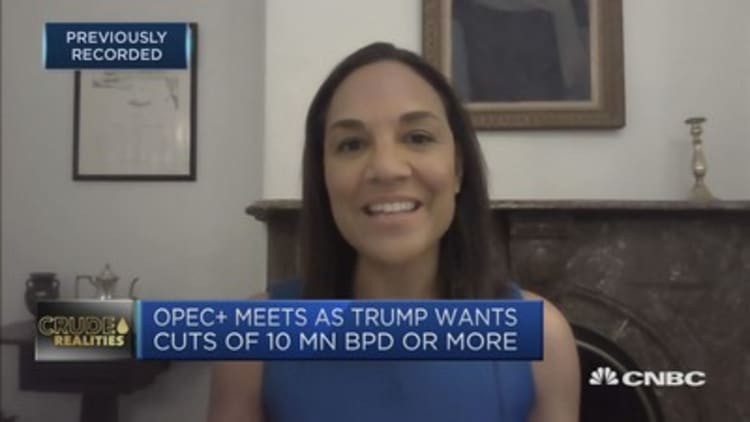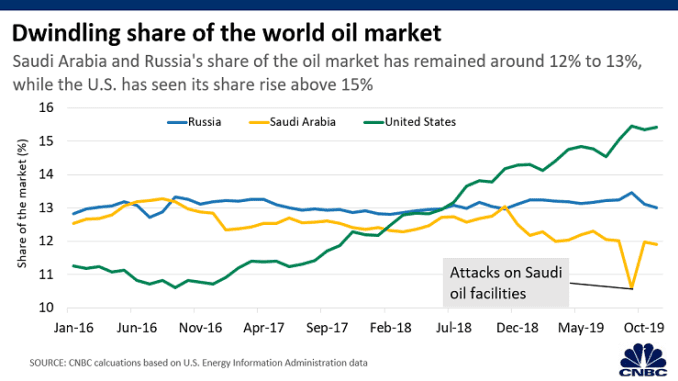An oil deal is still ‘tricky,’ prices could dip into the teens if it falls apart: Strategist
- “A lot is still in play, I think it’s still challenging to get a deal across the finish line,” said Helima Croft of RBC Capital Markets.
- Even if a deal is reached, however, she said it is unlikely to solve the price situation immediately because of the decline in demand in light of the coronavirus crisis.
- Some sticking points in the discussions include how much Saudi Arabia will be required to cut and U.S. participation in the agreement.

Oil prices could fall under $20 a barrel if the world’s producers fail to reach an agreement on reducing output, one strategist told CNBC this week.
OPEC and its allies are set to meet via video conference on Thursday to discuss production cuts. Oil futures rose this week amid hopes of an agreement to lower supply by as much as 10 million to 15 million barrels per day.
U.S. crude futures were up 4.58% to $26.24 in Asia’s afternoon trade Thursday, while Brent was up 3.65% to $34.04.
But RBC Capital Markets’ Helima Croft said there are still issues to be worked out between the producers.
“It’s going to be very tricky to get the final deal put together,” she warned on “Capital Connection” on Thursday. “A lot is still in play, I think it’s still challenging to get a deal across the finish line.”
Even if a deal is reached, however, she said it is unlikely to solve the price situation immediately because of the decline in demand.
“I think this agreement’s important to turning off the taps and allowing potential recovery to happen. But we’re not going to get a quick rebound in prices in any event, because of the real demand destruction that we’re seeing because of the coronavirus.”

Russia triggered a price war in the oil markets when it refused to approve a proposal to cut production at the OPEC+ meeting in early March. Riyadh responded by offering discounts on oil, and both announced production increases for April despite demand declines due to the coronavirus pandemic. Both oil benchmarks hit 18-year lows as a result of the price war.
Some sticking points in the discussions include how much Saudi Arabia will be required to cut and U.S. participation in the agreement. “If those are the Russian terms, this could really fall apart. And again, prices could go to the teens,” she said.
Croft, who is RBC’s global head of commodity strategy, said there could “easily” be a situation where Russia insists that Saudi Arabia uses January production levels as a starting point for cuts. That would force the kingdom’s output lower than if it were to use April’s elevated levels as a benchmark.
She also noted that Russia has differentiated between a fall in U.S. production due to lower prices and a “mandated” cut.
Kremlin spokesman Dmitry Peskov reportedly said those are “absolutely different reductions.”
“You are comparing overall decline in demand with cuts aimed at stabilizing global markets,” Peskov said, according to a Reuters report. “These are different concepts and they could not be equaled.”

Croft said it’s currently “not clear” whether there will be any mandated U.S. production cut.
Kirill Tachennikov, senior analyst at BCS Global Markets, echoed that sentiment. He said, because Russia has difficulty in finding buyers for oil, “everyone is ready to agree,” and the “only problem” that could arise is one where the U.S. isn’t ready to accept cuts.
If this meeting ends without an agreement, the next off-ramp to end the price war would be the June OPEC meeting, Croft said. “I think a lot is really on the line.”
